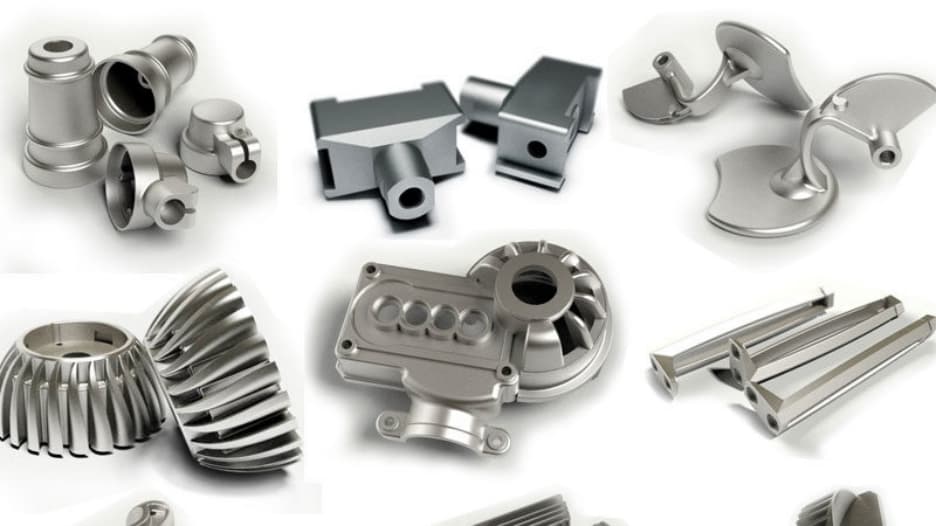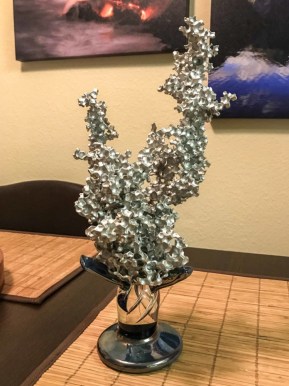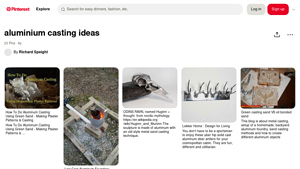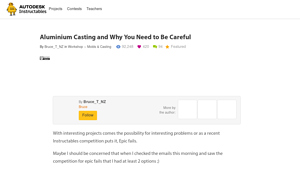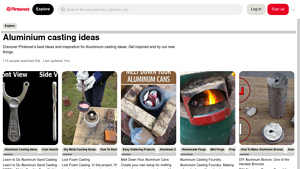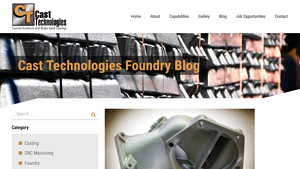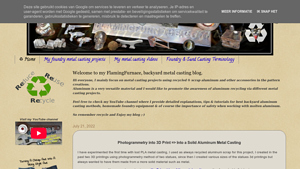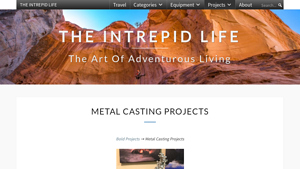Aluminium Casting Projects Guide: Type, Cost, Top List…
Introduction: Navigating the Global Market for aluminium casting projects
Navigating the complexities of the global market for aluminium casting projects presents a unique set of challenges for international B2B buyers. Sourcing reliable suppliers and understanding the nuances of aluminium casting can be daunting, particularly in regions like Africa, South America, the Middle East, and Europe. This comprehensive guide is designed to empower you with actionable insights into various types of aluminium casting, their diverse applications, and essential supplier vetting processes. By addressing key considerations such as cost structures, quality standards, and safety protocols, we aim to equip you with the knowledge necessary to make informed purchasing decisions.
As the demand for high-quality aluminium castings continues to rise, understanding market dynamics becomes crucial. This guide will delve into the intricacies of sourcing, including identifying reputable suppliers, evaluating their capabilities, and ensuring compliance with international standards. We will also explore the latest trends in aluminium casting technology, helping you stay ahead in a competitive landscape.
Whether you are a buyer from Brazil seeking sustainable solutions or a procurement manager in Germany looking for innovative casting techniques, our guide will serve as a valuable resource. By facilitating a deeper understanding of the aluminium casting market, we aim to enhance your procurement strategy, ultimately contributing to your business’s success and operational efficiency.
Understanding aluminium casting projects Types and Variations
| Type Name | Key Distinguishing Features | Primary B2B Applications | Brief Pros & Cons for Buyers |
|---|---|---|---|
| Sand Casting | Utilizes sand as a mold material; versatile. | Automotive, aerospace components. | Pros: Cost-effective, suitable for large parts. Cons: Surface finish may require additional processing. |
| Die Casting | High-pressure injection of molten aluminum. | High-volume production items. | Pros: Excellent dimensional accuracy, smooth surface finish. Cons: High initial tooling costs. |
| Investment Casting | Uses wax patterns for precision molds. | Precision parts in various sectors. | Pros: Complex shapes, high detail. Cons: Longer lead times, higher costs per unit. |
| Permanent Mold Casting | Metal molds for repeated use; efficient. | Electrical housings, tools. | Pros: Good surface finish, efficient for medium runs. Cons: Limited to simpler shapes. |
| Low-Pressure Casting | Controlled pressure for filling molds. | Aerospace, automotive components. | Pros: Reduces porosity, better mechanical properties. Cons: Equipment can be costly. |
What Are the Characteristics of Sand Casting Projects?
Sand casting is one of the most common methods used for aluminum casting projects. It involves creating a mold from sand, which is then filled with molten aluminum. This method is highly versatile, allowing for large parts and complex geometries. B2B buyers should consider the cost-effectiveness of sand casting, especially for low to medium production runs. However, the surface finish may not meet high-quality standards without additional machining, which can increase overall costs.
How Does Die Casting Differ from Other Methods?
Die casting is characterized by its use of high-pressure injection techniques to fill molds with molten aluminum. This method is ideal for high-volume production due to its ability to produce parts with excellent dimensional accuracy and smooth surface finishes. B2B buyers in industries such as automotive and consumer goods often favor die casting for its efficiency and repeatability. However, the initial investment in tooling can be significant, making it more suitable for large-scale production.
What Are the Benefits of Investment Casting?
Investment casting, also known as lost-wax casting, is known for its precision and ability to create complex shapes. This method involves making a wax pattern that is coated in a ceramic shell, which is then heated to remove the wax and fill with aluminum. It is particularly suitable for intricate parts used in aerospace and medical applications. While investment casting offers high detail and excellent surface finish, buyers should consider longer lead times and higher costs, making it more appropriate for lower volume, high-value parts.
Why Choose Permanent Mold Casting?
Permanent mold casting utilizes reusable metal molds, making it an efficient choice for medium production runs. This method is particularly beneficial for parts requiring a good surface finish and dimensional accuracy, such as electrical housings and tools. B2B buyers appreciate the durability of permanent molds, which can significantly reduce production costs over time. However, the design complexity is limited compared to other methods, which may restrict its applicability for some projects.
What Makes Low-Pressure Casting an Attractive Option?
Low-pressure casting involves filling molds with molten aluminum under controlled pressure, which minimizes defects such as porosity. This method is particularly suitable for components in the aerospace and automotive industries, where material integrity is critical. B2B buyers can benefit from the improved mechanical properties of parts produced through low-pressure casting. However, the equipment and setup costs can be high, making it essential for buyers to assess their production needs carefully.
Key Industrial Applications of aluminium casting projects
| Industry/Sector | Specific Application of aluminium casting projects | Value/Benefit for the Business | Key Sourcing Considerations for this Application |
|---|---|---|---|
| Automotive | Engine components and transmission housings | Lightweight, improved fuel efficiency, and enhanced performance | Quality control standards, certification requirements, and sourcing local suppliers to reduce costs. |
| Aerospace | Structural components for aircraft | High strength-to-weight ratio, corrosion resistance, and safety | Compliance with aerospace regulations, material traceability, and supplier reliability. |
| Electrical & Electronics | Housings for electrical enclosures and connectors | Durability, thermal conductivity, and design flexibility | Supplier capabilities in precision casting, customization options, and delivery timelines. |
| Construction | Architectural elements and structural supports | Aesthetic appeal, durability, and sustainability | Sourcing local materials to reduce carbon footprint and adherence to building codes. |
| Consumer Goods | Kitchenware and home appliances | Lightweight, aesthetic appeal, and cost-effectiveness | Design capabilities, ability to handle custom orders, and production scalability. |
How is Aluminium Casting Used in the Automotive Industry?
Aluminium casting plays a critical role in the automotive industry, particularly in the manufacturing of engine components and transmission housings. By utilizing aluminium, manufacturers can achieve a lightweight design that significantly enhances fuel efficiency and overall vehicle performance. For international buyers, especially in regions like Africa and South America, sourcing from suppliers with established quality control standards is essential to ensure compliance with safety regulations and to maintain competitive pricing.
What Are the Applications of Aluminium Casting in Aerospace?
In the aerospace sector, aluminium casting is integral to producing structural components that require a high strength-to-weight ratio. These components are crucial for maintaining aircraft safety while optimizing performance. Buyers from Europe, particularly Germany, must consider suppliers that comply with stringent aerospace regulations and possess the capability for material traceability to ensure quality and safety in their sourcing decisions.
How Do Electrical and Electronics Industries Benefit from Aluminium Casting?
The electrical and electronics industries utilize aluminium casting for creating durable housings for enclosures and connectors. The benefits include excellent thermal conductivity and design flexibility, which are vital for efficient heat dissipation in electronic devices. For B2B buyers, it is important to evaluate supplier capabilities in precision casting and their ability to customize products to meet specific design requirements, ensuring timely delivery and reliability.
What is the Role of Aluminium Casting in Construction?
In construction, aluminium casting is used for architectural elements and structural supports, providing both aesthetic appeal and durability. The lightweight nature of aluminium also contributes to sustainability efforts in building projects. Buyers should prioritize sourcing local materials to minimize transportation emissions and ensure compliance with local building codes, which can vary significantly across regions, including the Middle East and Africa.
How is Aluminium Casting Applied in Consumer Goods Manufacturing?
Aluminium casting is widely used in the consumer goods sector for manufacturing kitchenware and home appliances. The material offers a combination of lightweight properties, aesthetic appeal, and cost-effectiveness, making it an attractive choice for manufacturers. Buyers need to assess suppliers’ design capabilities and their ability to handle custom orders, as well as their production scalability to meet varying demand levels in markets across South America and Europe.
3 Common User Pain Points for ‘aluminium casting projects’ & Their Solutions
Scenario 1: Inefficient Supply Chain Management for Aluminium Casting Projects
The Problem: B2B buyers often face challenges related to sourcing high-quality aluminium and casting components due to inefficient supply chains. This can result in delays, increased costs, and subpar materials that compromise the integrity of the final products. For companies operating in regions like Africa and South America, where local suppliers may not meet international standards, the risk of procurement mishaps is heightened. Additionally, fluctuating prices and inconsistent delivery schedules can lead to project overruns, affecting timelines and profitability.
The Solution: To effectively manage supply chain issues, B2B buyers should establish robust relationships with reliable suppliers who can provide consistent quality and timely deliveries. It is crucial to conduct thorough due diligence when selecting suppliers, including checking their certifications, production capabilities, and past performance. Implementing a dual-sourcing strategy can also mitigate risks—working with multiple suppliers can ensure that if one fails to deliver, another can step in. Furthermore, utilizing technology such as supply chain management software can enhance visibility and streamline communication, allowing for real-time tracking of orders and inventory. Finally, engaging in long-term contracts with key suppliers can stabilize pricing and ensure availability, thus reducing the unpredictability that often plagues aluminium casting projects.
Scenario 2: Safety Risks in Aluminium Casting Operations
The Problem: Safety is a significant concern in aluminium casting projects, especially when handling molten metal. B2B buyers must ensure that their teams are well-equipped and trained to manage the hazards associated with high-temperature operations, such as burns, explosions, or exposure to harmful fumes. Inadequate safety measures can lead to serious accidents, resulting in not only potential harm to employees but also legal liabilities and damage to the company’s reputation.
The Solution: Implementing a comprehensive safety program is essential for mitigating risks associated with aluminium casting. This program should include regular training sessions for all employees on proper handling techniques, the use of personal protective equipment (PPE), and emergency response procedures. B2B buyers should invest in high-quality PPE, such as heat-resistant gloves, face shields, and protective clothing, ensuring that all workers are adequately protected. Additionally, installing safety equipment, such as fire extinguishers and first aid kits, in accessible locations can further enhance workplace safety. Conducting routine safety audits and risk assessments will help identify potential hazards and ensure compliance with local regulations, ultimately fostering a culture of safety that protects both employees and the business.
Scenario 3: Quality Control Challenges in Aluminium Casting Products
The Problem: Maintaining quality in aluminium casting projects can be challenging, particularly when scaling production or working with complex designs. B2B buyers often encounter issues related to defects such as porosity, dimensional inaccuracies, or surface imperfections, which can compromise the functionality and aesthetic of the final products. These quality issues not only lead to increased waste and rework but can also damage client relationships and affect the company’s market reputation.
The Solution: To enhance quality control, B2B buyers should implement a rigorous inspection and testing protocol throughout the casting process. This includes using advanced techniques such as non-destructive testing (NDT) to identify defects before products reach the market. Establishing clear quality standards and benchmarks, aligned with international norms, can help ensure that all products meet client expectations. Moreover, investing in training for quality assurance personnel will enable them to effectively monitor and control production processes. Collaborating closely with design and engineering teams during the initial phases can also minimize errors related to design flaws. Finally, fostering a feedback loop with customers can provide valuable insights into product performance and help identify areas for improvement, ensuring continuous enhancement of quality in aluminium casting projects.
Strategic Material Selection Guide for aluminium casting projects
When selecting materials for aluminium casting projects, it is essential to consider the specific properties and applications of various materials. This analysis focuses on four common materials used in aluminium casting: clay-graphite crucibles, sand molds, refractory materials, and greensand. Each material has unique characteristics that influence performance, cost, and suitability for different applications.
What Are the Key Properties of Clay-Graphite Crucibles?
Clay-graphite crucibles are widely used due to their excellent thermal conductivity and resistance to thermal shock. They can withstand high temperatures (up to 1600°C) and are resistant to oxidation, making them ideal for melting aluminium. The combination of clay and graphite provides a durable structure that minimizes contamination of the molten metal.
Pros: These crucibles offer high durability and longevity, enabling multiple uses without significant degradation. They are also relatively easy to manufacture and handle.
Cons: However, they can be more expensive than other crucible options, and their weight may pose handling challenges in larger operations.
Impact on Application: Clay-graphite crucibles are compatible with various alloys, making them suitable for diverse casting applications. Buyers should consider the specific alloy types they plan to work with to ensure compatibility.
Considerations for International Buyers: Compliance with international standards such as ASTM and DIN is crucial. Buyers from regions like Europe and South America may prefer suppliers who provide certifications for their products.
How Do Sand Molds Affect Aluminium Casting Projects?
Sand molds, particularly those made from greensand, are essential for shaping aluminium during the casting process. Greensand is a mixture of sand, clay, and water, which allows for excellent moldability and fine detail reproduction.
Pros: The primary advantage of sand molds is their cost-effectiveness and ease of use. They can be quickly produced and reused, making them ideal for high-volume production.
Cons: However, sand molds may not provide the same level of surface finish as other materials, and they can be less durable than metal molds.
Impact on Application: The porosity of sand molds can affect the cooling rate and surface quality of the final product. International buyers should assess the specific requirements of their casting projects to determine the suitability of sand molds.
Considerations for International Buyers: Buyers should ensure that the sand used meets local environmental regulations, especially in regions like Africa and the Middle East, where environmental compliance is increasingly scrutinized.
What Role Do Refractory Materials Play in Aluminium Casting?
Refractory materials are crucial for constructing furnaces that melt aluminium. These materials are designed to withstand extreme temperatures and protect the furnace structure from thermal damage.
Pros: Refractory materials provide excellent insulation, which enhances energy efficiency in melting processes. They are also resistant to chemical corrosion.
Cons: The primary limitation is their cost, as high-quality refractory materials can be expensive. Additionally, installation and maintenance can be complex.
Impact on Application: The choice of refractory material can significantly influence the melting efficiency and operational costs of casting projects. Buyers should consider the thermal properties and chemical resistance of the refractory materials in relation to their specific applications.
Considerations for International Buyers: Compliance with local standards for refractory materials is essential, especially in regions with stringent industrial regulations, such as Germany.
How Does Greensand Compare in Aluminium Casting?
Greensand is another popular material for creating molds in aluminium casting. Its unique composition allows for excellent flexibility and adaptability in mold formation.
Pros: Greensand is inexpensive and readily available, making it a popular choice for both small and large-scale operations. It can be easily mixed and molded to fit various designs.
Cons: However, greensand molds may require more frequent replacement and can be less durable than other mold types, leading to potential increases in production costs over time.
Impact on Application: The flexibility of greensand allows for intricate designs, but its moisture content must be carefully controlled to prevent defects in the final product.
Considerations for International Buyers: Buyers should ensure that the greensand complies with local standards and environmental regulations, particularly in regions where sustainable practices are prioritized.
Summary Table of Material Selection for Aluminium Casting Projects
| Material | Typical Use Case for aluminium casting projects | Key Advantage | Key Disadvantage/Limitation | Relative Cost (Low/Med/High) |
|---|---|---|---|---|
| Clay-Graphite Crucibles | Melting aluminium and alloys | High durability and thermal shock resistance | Higher cost and heavier weight | High |
| Sand Molds | Shaping aluminium products | Cost-effective and easy to produce | Lower surface finish quality | Low |
| Refractory Materials | Constructing furnaces for melting | Excellent insulation and corrosion resistance | Expensive and complex maintenance | High |
| Greensand | Creating molds for casting | Inexpensive and flexible | Requires frequent replacement | Low |
This strategic material selection guide provides valuable insights for B2B buyers involved in aluminium casting projects, ensuring informed decisions that align with their operational needs and compliance requirements.
In-depth Look: Manufacturing Processes and Quality Assurance for aluminium casting projects
What Are the Key Stages of Manufacturing Processes for Aluminium Casting Projects?
Aluminium casting projects require meticulous planning and execution to ensure high-quality outcomes. The manufacturing process generally unfolds in several key stages: material preparation, forming, assembly, and finishing. Each stage plays a crucial role in determining the final product’s quality, performance, and compliance with industry standards.
How Is Material Prepared for Aluminium Casting?
The first step in the aluminium casting process is material preparation, which involves sourcing high-quality aluminium alloys that meet the specifications of the project. The selected alloy must be free from impurities, as these can significantly affect the casting’s mechanical properties.
Once the material is sourced, it undergoes melting in a furnace. The melting temperature for aluminium typically ranges between 660°C to 750°C. Various melting techniques can be employed, including electric arc, induction, or gas-fired furnaces. The choice of melting technique can influence the overall quality of the aluminium. For instance, induction melting is often preferred for its ability to maintain consistent temperatures and minimize oxidation.
What Techniques Are Used in the Forming Stage of Aluminium Casting?
After the aluminium is melted, it moves to the forming stage, where it is poured into molds to create the desired shapes. Various forming techniques may be utilized, including sand casting, die casting, and permanent mold casting.
- Sand Casting: This traditional method uses sand as the mold material, allowing for complex shapes and sizes. It is particularly advantageous for low-volume production runs.
- Die Casting: This technique is ideal for high-volume production, as it uses reusable molds and provides excellent dimensional accuracy.
- Permanent Mold Casting: In this method, metal molds are used, resulting in finer surface finishes and better mechanical properties.
The choice of forming technique depends on factors such as production volume, complexity of the part, and cost considerations.
How Is Assembly Conducted in Aluminium Casting Projects?
In many aluminium casting projects, assembly may involve multiple components that need to be joined together. Techniques such as welding, adhesive bonding, or mechanical fastening are commonly employed.
It is essential to ensure that the assembly process maintains the integrity of the cast components. For instance, welding should be performed with compatible filler materials to avoid compromising the properties of the aluminium. Adequate training and certification of personnel involved in the assembly process can further enhance the quality of the final product.
What Finishing Processes Are Essential for Aluminium Castings?
Finishing processes are critical to enhancing the aesthetic and functional properties of aluminium castings. Common finishing techniques include:
- Surface Treatments: Methods such as anodizing or powder coating provide corrosion resistance and improved appearance.
- Machining: Precision machining processes, like milling or grinding, are often applied to achieve tight tolerances and smooth surfaces.
- Inspection: Final inspection ensures that the finished product meets all specifications and quality standards before it is shipped.
The selection of finishing processes can significantly affect the performance and durability of the final product, making this stage crucial.
What Quality Assurance Practices Are Integral to Aluminium Casting Projects?
Quality assurance (QA) is paramount in the aluminium casting industry, especially when catering to international B2B buyers. Implementing robust QA practices ensures that products meet relevant international standards and customer expectations.
Which International Standards Should B2B Buyers Be Aware Of?
Several international quality standards apply to aluminium casting projects, including:
- ISO 9001: This standard focuses on quality management systems and is applicable to any organization looking to improve its processes and customer satisfaction.
- CE Marking: Required for products sold in the European Economic Area, CE marking indicates compliance with health, safety, and environmental protection standards.
- API Standards: For suppliers in the oil and gas sector, compliance with American Petroleum Institute (API) standards is essential, particularly for components used in critical applications.
Understanding these standards can help B2B buyers assess the credibility and reliability of their suppliers.
What Are the Key Quality Control Checkpoints in Aluminium Casting?
Quality control (QC) checkpoints are essential throughout the manufacturing process to ensure compliance with quality standards. Common QC checkpoints include:
- Incoming Quality Control (IQC): This initial checkpoint assesses the quality of raw materials before they enter production. It helps to ensure that only high-quality materials are used.
- In-Process Quality Control (IPQC): This stage involves monitoring the manufacturing process to identify and correct any issues that may arise during production. Regular inspections and tests during this phase can prevent defects.
- Final Quality Control (FQC): Conducted at the end of the manufacturing process, FQC involves comprehensive testing of the finished product to ensure it meets all specifications and quality standards.
How Can B2B Buyers Verify Supplier Quality Control?
B2B buyers should take proactive steps to verify the quality control practices of their suppliers. This can include:
- Audits: Conducting regular audits of suppliers can help assess their compliance with quality standards and identify areas for improvement.
- Quality Reports: Requesting detailed quality reports, including test results and inspection outcomes, provides transparency into the supplier’s QC processes.
- Third-Party Inspections: Engaging third-party inspection agencies can offer an unbiased assessment of a supplier’s quality practices and product reliability.
What Are the QC and Certification Nuances for International B2B Buyers?
For international buyers, particularly those from Africa, South America, the Middle East, and Europe, understanding the nuances of quality control and certification is crucial.
- Cultural Differences: Different regions may have varying standards of quality and expectations, making it essential to communicate clearly with suppliers.
- Regulatory Compliance: Buyers must ensure that their suppliers comply with local regulations and international standards relevant to their market.
- Supply Chain Transparency: Maintaining transparency in the supply chain can help buyers track the quality of materials and processes used in production.
By focusing on these aspects, international B2B buyers can enhance their confidence in supplier quality and ensure successful aluminium casting projects.
Practical Sourcing Guide: A Step-by-Step Checklist for ‘aluminium casting projects’
Introduction
In the realm of aluminium casting, precision and quality are paramount. This practical sourcing guide aims to equip B2B buyers with a systematic checklist to streamline the procurement process for aluminium casting projects. By following these steps, buyers can ensure they partner with reliable suppliers and achieve the desired outcomes for their projects.
Step 1: Define Your Technical Specifications
Clearly outlining the technical specifications of your aluminium casting project is crucial. This includes determining the desired alloy composition, dimensions, tolerances, and surface finish requirements. A detailed specification helps in communicating your needs effectively to potential suppliers, ensuring they can meet your project’s demands.
- Considerations:
- Identify any industry standards that must be adhered to, such as ISO or ASTM specifications.
- Take into account the intended application of the cast products, as this influences material properties.
Step 2: Research Potential Suppliers
Conduct thorough research to identify potential suppliers with expertise in aluminium casting. Look for companies that have a proven track record in the industry and have experience with similar projects.
- Action Items:
- Review supplier websites and online reviews for feedback from previous clients.
- Utilize industry-specific directories and trade associations to find reputable suppliers.
Step 3: Evaluate Supplier Certifications
Verifying supplier certifications is essential for ensuring product quality and compliance with industry standards. Look for certifications such as ISO 9001, which indicates a commitment to quality management systems.
- Key Certifications to Check:
- ISO 14001 for environmental management.
- AS9100 for aerospace-related projects, if applicable.
Step 4: Request Samples and Case Studies
Before finalizing a supplier, request samples of their previous work and relevant case studies. This allows you to assess their capabilities and the quality of their aluminium castings.
- Focus Areas:
- Examine the finish, precision, and overall quality of the samples.
- Review case studies to understand how they have handled challenges similar to those in your project.
Step 5: Discuss Lead Times and Production Capacity
Understanding a supplier’s lead times and production capacity is vital for project planning. This ensures that the supplier can meet your timelines and scale production if your needs increase.
- Inquiries to Make:
- Ask about their current workload and how it might affect your project.
- Inquire about their capabilities to manage rush orders or larger volumes.
Step 6: Negotiate Pricing and Terms
Once you have shortlisted suppliers, it’s time to negotiate pricing and terms. Ensure that the pricing reflects the quality and service you expect, and clarify payment terms to avoid misunderstandings.
- Considerations:
- Explore bulk order discounts or long-term partnership agreements.
- Discuss warranties and after-sales support for added security.
Step 7: Establish Communication Protocols
Effective communication is key to the success of any aluminium casting project. Establish clear communication protocols to ensure that both parties are aligned throughout the project lifecycle.
- Best Practices:
- Set regular check-in meetings to discuss progress and address any issues.
- Use project management tools to track milestones and deliverables.
By following this step-by-step checklist, B2B buyers can navigate the complexities of sourcing aluminium casting projects with confidence, ensuring quality outcomes that meet their specifications.
Comprehensive Cost and Pricing Analysis for aluminium casting projects Sourcing
What Are the Key Cost Components in Aluminium Casting Projects?
When engaging in aluminium casting projects, understanding the cost structure is crucial for effective budgeting and decision-making. The primary cost components include:
-
Materials: The cost of aluminium alloys, which can vary significantly based on market fluctuations. Additionally, the type of molding material (e.g., greensand, metal molds) and refractory linings can influence material costs.
-
Labor: Skilled labor is essential for both the casting process and quality control. Labor costs can differ based on geographical location, with regions like Europe often commanding higher wages compared to some parts of Africa and South America.
-
Manufacturing Overhead: This encompasses costs related to utilities, facility maintenance, and equipment depreciation. Efficient operations can help reduce overhead, but it is important to account for these costs in pricing.
-
Tooling: The creation of molds and dies represents a significant upfront investment. Custom tooling may be necessary for specialized projects, affecting overall costs.
-
Quality Control (QC): Implementing robust QC processes ensures product reliability and compliance with international standards. This may involve additional testing and certification costs.
-
Logistics: Shipping costs, including freight and insurance, can substantially impact the total cost, particularly for international shipments. The choice of Incoterms can also affect pricing and risk distribution.
-
Margin: Suppliers typically include a margin to cover risks and ensure profitability. Understanding market dynamics can help buyers negotiate better margins.
How Do Price Influencers Affect Aluminium Casting Costs?
Several factors can influence the pricing of aluminium casting projects:
-
Volume/MOQ: Larger orders may qualify for bulk pricing, reducing per-unit costs. Establishing a Minimum Order Quantity (MOQ) can also influence overall pricing.
-
Specifications and Customization: Customized designs can lead to higher costs due to the complexity involved in tooling and production. Providing detailed specifications can help suppliers offer more accurate quotes.
-
Materials and Quality Certifications: Premium materials or those with specific certifications (e.g., ISO, ASTM) typically come at a higher price. Buyers should weigh the necessity of such certifications against project requirements.
-
Supplier Factors: The supplier’s location, reputation, and production capabilities can significantly influence costs. Partnering with established suppliers may provide reliability but at a premium.
-
Incoterms: Choosing the appropriate Incoterms (e.g., FOB, CIF) can affect the overall cost structure. Understanding the implications of each term helps buyers manage costs and risks effectively.
What Are the Best Practices for Negotiating Aluminium Casting Prices?
For international B2B buyers, particularly from diverse regions such as Africa, South America, the Middle East, and Europe, effective negotiation and cost management are vital:
-
Research and Benchmarking: Before engaging suppliers, conduct thorough market research to understand average pricing and standards within your industry. This equips you with leverage during negotiations.
-
Total Cost of Ownership (TCO): Look beyond initial pricing. Consider the total cost of ownership, including maintenance, durability, and potential rework costs. A slightly higher upfront cost may yield long-term savings.
-
Establish Long-Term Relationships: Building strong relationships with suppliers can lead to more favorable terms, better service, and potential discounts on future orders.
-
Be Transparent About Your Needs: Clearly communicate your project requirements and expected volumes. This transparency can lead to more tailored pricing and service offerings.
-
Consider Local Suppliers: For buyers in Africa and South America, sourcing from local suppliers may reduce logistics costs and lead times, potentially offsetting higher material costs.
Conclusion: Why Is it Important to Understand Pricing Nuances in Aluminium Casting?
Understanding the complexities of cost structures and pricing nuances in aluminium casting projects is essential for B2B buyers. By considering the various cost components, price influencers, and best negotiation practices, businesses can make informed decisions that align with their budget and project goals. It is crucial to remember that indicative prices can fluctuate due to market conditions, so continuous market analysis and supplier engagement are vital for maintaining competitive pricing.
Alternatives Analysis: Comparing aluminium casting projects With Other Solutions
Understanding Alternatives in Aluminium Casting Projects
When evaluating aluminium casting projects, it’s essential to consider alternative methods and technologies that can achieve similar outcomes. Each alternative comes with its own set of advantages and disadvantages, which can significantly impact decision-making for B2B buyers. This analysis will compare aluminium casting with two viable alternatives: 3D Printing (Additive Manufacturing) and Die Casting.
Comparison Table
| Comparison Aspect | Aluminium Casting Projects | 3D Printing (Additive Manufacturing) | Die Casting |
|---|---|---|---|
| Performance | High-quality, complex shapes; can achieve intricate designs | Excellent for prototyping and low-volume production; limited material options | High-speed production; great for high-volume runs but less flexible in design |
| Cost | Moderate initial setup costs; lower material costs for scrap recycling | High initial investment in printers; material costs can vary significantly | High setup costs; cost-effective for large batches |
| Ease of Implementation | Requires skilled labor and safety precautions; setup can be labor-intensive | Generally easier for small-scale runs; requires specific software and expertise | Requires specialized equipment; molds can be expensive to create |
| Maintenance | Ongoing maintenance of furnaces and equipment; safety gear essential | Minimal maintenance for printers; software updates necessary | Regular maintenance of machinery; molds require replacement over time |
| Best Use Case | Custom parts and prototypes; scrap recycling | Rapid prototyping, custom parts in small quantities | Mass production of standard parts with consistent quality |
Detailed Breakdown of Alternatives
3D Printing (Additive Manufacturing)
3D printing offers significant advantages for businesses looking to create prototypes or small-batch custom parts. The technology allows for rapid iterations, reducing time to market. However, it may be limited by the materials available for printing, which can restrict the range of applications. The initial investment in high-quality 3D printers can also be substantial, making it less feasible for companies with tight budgets. Nevertheless, for projects requiring intricate designs and quick turnaround, 3D printing is a compelling alternative.
Die Casting
Die casting is a highly efficient manufacturing process, particularly for high-volume production runs. It provides excellent surface finish and dimensional accuracy, making it suitable for mass-producing complex parts. However, the setup costs for die casting can be prohibitive, especially for small businesses or those needing custom parts. The process is less flexible than aluminium casting, as changes to the design may necessitate new molds. Therefore, while die casting is ideal for large-scale production, it may not be the best choice for companies focused on customization or prototyping.
Conclusion: How to Choose the Right Solution for Your Needs
When selecting the right method for your aluminium casting project, it’s crucial to assess your specific requirements and constraints. Consider factors such as production volume, budget, material needs, and desired lead time. If your focus is on high-volume production with consistent quality, die casting may be the optimal choice. For rapid prototyping and customization, 3D printing offers flexibility and speed. Aluminium casting remains a strong contender for its ability to recycle materials and create complex designs. Ultimately, the decision should align with your business goals, operational capabilities, and market demands.
Essential Technical Properties and Trade Terminology for aluminium casting projects
What are the Essential Technical Properties in Aluminium Casting Projects?
When embarking on aluminium casting projects, understanding key technical properties is crucial for ensuring product quality and operational efficiency. Here are some critical specifications:
-
Material Grade
Aluminium alloys are classified by their grade, which indicates their composition and mechanical properties. Common grades like 6061 and 356 are popular in casting due to their excellent corrosion resistance and strength. For B2B buyers, selecting the right material grade is vital for ensuring the end product meets specific performance requirements, such as weight, durability, and thermal conductivity. -
Dimensional Tolerance
Tolerance refers to the allowable variation in dimensions of the cast part. It is critical for ensuring parts fit together correctly in assembly processes. In B2B contexts, tighter tolerances often translate to higher manufacturing costs, so understanding the required tolerances helps buyers make informed decisions about their budget and production timelines. -
Casting Surface Finish
The surface finish of a cast part affects its aesthetic appearance and functionality. Common finishes include sand casting, which may require additional machining for a smoother surface, and die casting, which often yields finer finishes. Buyers should be aware of the surface finish specifications needed for their applications to avoid costly rework or quality issues. -
Mechanical Properties
Mechanical properties such as tensile strength, yield strength, and elongation are essential for understanding how the cast aluminium will perform under stress. These properties help determine if the material is suitable for specific applications, particularly in industries like automotive and aerospace, where performance is critical. -
Heat Treatment Capability
Some aluminium alloys can be heat-treated to enhance their mechanical properties. Understanding whether an alloy can undergo heat treatment is important for B2B buyers looking to optimize performance and strength in their products. This capability can lead to significant improvements in product lifespan and reliability. -
Weight-to-Strength Ratio
This property indicates how much weight a material can support relative to its own weight. A high weight-to-strength ratio is desirable in industries like transportation and aerospace, where reducing weight can lead to increased fuel efficiency. Buyers should evaluate this ratio when selecting materials for applications where performance and efficiency are critical.
What are Common Trade Terms Used in Aluminium Casting?
Familiarity with industry jargon can significantly enhance communication and decision-making in B2B transactions. Here are some essential trade terms:
-
OEM (Original Equipment Manufacturer)
An OEM is a company that produces parts or equipment that may be marketed by another manufacturer. In the context of aluminium casting, understanding OEM relationships can help buyers identify reliable suppliers and assess the quality of components used in their products. -
MOQ (Minimum Order Quantity)
MOQ refers to the smallest quantity of a product that a supplier is willing to sell. This term is crucial for B2B buyers as it impacts inventory management and cash flow. Understanding the MOQ helps businesses plan their purchasing strategy effectively. -
RFQ (Request for Quotation)
An RFQ is a document issued by a buyer to solicit price offers from suppliers for specific goods or services. In aluminium casting, providing a detailed RFQ can lead to more accurate quotes and better supplier engagement, ensuring that all specifications are met. -
Incoterms (International Commercial Terms)
Incoterms define the responsibilities of buyers and sellers in international shipping, including who pays for shipping, insurance, and tariffs. Familiarity with these terms helps B2B buyers negotiate contracts and avoid unexpected costs during international transactions. -
Lead Time
This term refers to the amount of time between placing an order and receiving the product. Understanding lead times is essential for B2B buyers to manage project timelines and ensure timely delivery of components critical to their operations. -
Casting Process
This term encompasses various methods of shaping molten metal into desired forms, including sand casting, die casting, and investment casting. Each method has its advantages and disadvantages, and buyers should understand these processes to choose the right one for their project requirements.
By grasping these essential technical properties and trade terms, B2B buyers can navigate aluminium casting projects more effectively, ensuring they make informed decisions that enhance their business outcomes.
Navigating Market Dynamics and Sourcing Trends in the aluminium casting projects Sector
What are the Current Market Dynamics and Key Trends in the Aluminium Casting Sector?
The aluminium casting sector is witnessing significant growth driven by various global factors, including increased demand for lightweight materials in automotive, aerospace, and construction industries. The shift towards electric vehicles (EVs) and energy-efficient designs has intensified the need for high-performance aluminium components, as they contribute to weight reduction and enhanced fuel efficiency. Furthermore, advancements in casting technologies, such as 3D printing and automated processes, are reshaping sourcing strategies, enabling manufacturers to create complex geometries and improve production efficiency.
Emerging B2B tech trends include the integration of artificial intelligence (AI) and machine learning in production processes, optimizing supply chain management, and enhancing quality control. International buyers, particularly from Africa, South America, the Middle East, and Europe, are increasingly adopting digital platforms for procurement, which streamline sourcing processes and provide access to a broader range of suppliers. This digital transformation is crucial in navigating the complexities of the global aluminium market, where fluctuations in raw material prices and geopolitical factors can impact sourcing decisions.
Moreover, sustainability is becoming a core consideration for B2B buyers. As governments and regulatory bodies impose stricter environmental standards, companies are seeking suppliers who demonstrate compliance with these regulations. This trend not only influences procurement strategies but also encourages collaboration between manufacturers and suppliers to innovate sustainable casting processes.
How is Sustainability Shaping Ethical Sourcing in Aluminium Casting Projects?
Sustainability plays a pivotal role in the aluminium casting sector, as environmental impacts from mining and production processes are increasingly scrutinized. The aluminium industry is known for its significant carbon footprint, primarily due to energy-intensive smelting processes. Thus, international buyers are emphasizing the importance of ethical supply chains that minimize environmental harm.
To align with sustainability goals, sourcing strategies now prioritize suppliers who utilize recycled aluminium and employ energy-efficient production methods. Additionally, ‘green’ certifications, such as ISO 14001 for environmental management systems, are becoming essential for suppliers aiming to attract environmentally conscious buyers. These certifications not only validate a company’s commitment to sustainability but also enhance brand reputation in a competitive market.
Moreover, buyers are increasingly interested in the life cycle assessment (LCA) of aluminium products, which evaluates the environmental impact from production to disposal. By choosing suppliers that adhere to sustainable practices, companies can mitigate risks associated with regulatory compliance and improve their overall sustainability profile.
What is the Historical Context of Aluminium Casting for B2B Buyers?
The history of aluminium casting dates back to the early 19th century, when aluminium was first isolated as a metal. Initially regarded as a precious metal due to its rarity, aluminium’s applications expanded rapidly with advancements in smelting and casting technologies. The introduction of the Hall-Héroult process in 1886 revolutionized aluminium production, making it more accessible and cost-effective.
Throughout the 20th century, aluminium casting evolved significantly, driven by technological innovations and increasing demand across various industries. The development of die casting and sand casting techniques allowed for greater precision and efficiency, enabling manufacturers to produce intricate designs and larger volumes. Today, the aluminium casting sector is characterized by a blend of traditional craftsmanship and modern technology, providing B2B buyers with a diverse range of high-quality products suited for various applications.
Understanding the historical context of aluminium casting not only enriches the knowledge base of B2B buyers but also highlights the sector’s adaptability and potential for future growth. As the industry continues to evolve, staying informed about its history can aid buyers in making strategic sourcing decisions that align with their business goals.
Frequently Asked Questions (FAQs) for B2B Buyers of aluminium casting projects
-
How do I choose the right supplier for aluminium casting projects?
Choosing the right supplier involves assessing their experience, certifications, and production capabilities. Look for suppliers with a proven track record in aluminium casting and positive client reviews. Verify their quality control processes and ensure they adhere to international standards. Request samples of their previous work to evaluate quality and craftsmanship. Additionally, consider suppliers that can demonstrate flexibility in production and customization to meet your specific requirements. -
What are the typical lead times for aluminium casting orders?
Lead times can vary significantly based on the complexity of the project, the supplier’s capacity, and the size of the order. Generally, for standard aluminium casting projects, you can expect lead times ranging from 4 to 12 weeks. However, for more customized or complex designs, it might extend beyond this range. Always confirm lead times upfront and maintain clear communication with your supplier to avoid delays in your project timeline. -
What is the minimum order quantity (MOQ) for aluminium casting?
Minimum order quantities can vary widely between suppliers, typically ranging from 50 to 500 units for standard products. However, for custom designs, MOQs may be higher due to setup costs and tooling requirements. It’s crucial to discuss your needs with potential suppliers to understand their MOQ policies. If your project requires a smaller quantity, some suppliers may be willing to negotiate or offer alternatives. -
What are the common payment terms in international aluminium casting contracts?
Payment terms can differ based on the supplier’s policies and the nature of the transaction. Common arrangements include a 30% deposit upon order confirmation, with the remaining balance due prior to shipment. Some suppliers may offer net 30 or net 60 terms for established relationships. Always ensure payment terms are clearly outlined in your contract to avoid any misunderstandings. -
How can I ensure quality assurance in my aluminium casting projects?
To ensure quality assurance, request that your supplier provides certifications and documentation of their quality control processes. Consider implementing a multi-step inspection process, including pre-production samples, in-process inspections, and final product evaluations. Additionally, you may want to engage third-party inspection services to conduct quality checks before shipment, especially for large or high-value orders. -
What are the best practices for shipping aluminium cast products internationally?
When shipping aluminium cast products internationally, select a reliable logistics partner experienced in handling metal goods. Ensure proper packaging to prevent damage during transit, using foam or other protective materials. Familiarize yourself with customs regulations in both the exporting and importing countries to avoid delays. Additionally, consider insurance for high-value shipments to protect against loss or damage. -
How can I customize my aluminium casting designs?
Customization of aluminium casting designs typically involves collaboration with your supplier during the design phase. Share your specifications, including dimensions, finishes, and any functional requirements. Most suppliers can assist with design adjustments and provide feedback on manufacturability. Use CAD software to create detailed designs, which can help facilitate clearer communication and accurate production. -
What are the environmental considerations in aluminium casting?
Environmental considerations in aluminium casting include the sourcing of materials, energy consumption during production, and waste management practices. Opt for suppliers that use recycled aluminium and adhere to sustainable practices. Additionally, inquire about their emissions control and waste disposal methods to ensure compliance with international environmental standards. Partnering with eco-conscious suppliers can enhance your brand’s sustainability profile.
Important Disclaimer & Terms of Use
⚠️ Important Disclaimer
The information provided in this guide, including content regarding manufacturers, technical specifications, and market analysis, is for informational and educational purposes only. It does not constitute professional procurement advice, financial advice, or legal advice.
While we have made every effort to ensure the accuracy and timeliness of the information, we are not responsible for any errors, omissions, or outdated information. Market conditions, company details, and technical standards are subject to change.
B2B buyers must conduct their own independent and thorough due diligence before making any purchasing decisions. This includes contacting suppliers directly, verifying certifications, requesting samples, and seeking professional consultation. The risk of relying on any information in this guide is borne solely by the reader.
Top 8 Aluminium Casting Projects Manufacturers & Suppliers List
1. Pinterest UK – Aluminum Casting Techniques & Custom Creations
Domain: uk.pinterest.com
Registered: 2009 (16 years)
Introduction: Aluminum casting techniques, including green sand and plaster patterns; Low Cost Aluminum Foundry; Aluminum sculpture named Huginn; Solid cast aluminum deer antlers; Custom aluminum door knocker; Spanish Modernist Aluminum and Brass Sand-Cast Candlesticks; Funky foam and sand-cast aluminum furniture; Sand-cast ampersand in aluminum or iron; Polished Aluminum Corrugated Look Wall Cross; Cast Alumin…
2. Instructables – Aluminium Casting Essentials
Domain: instructables.com
Registered: 2005 (20 years)
Introduction: Aluminium casting involves melting metal, specifically aluminium, using various types of furnaces. Key components include: 1. **Furnaces**: Homemade refractory mix of Perlite and Calcium Aluminate cement, dual fuel burner (LPG and waste oil), and a muffle ring made of Clay Graphite mixture. 2. **Crucibles**: Commercial clay graphite crucibles and steel fire extinguishers repurposed as crucibles. 3…
3. Pinterest – Aluminum Casting Ideas
Domain: pinterest.com
Registered: 2009 (16 years)
Introduction: Aluminium Casting Ideas, Cast Aluminum, Aluminum Casting Beginner, Metal Casting Guide, Metal Casting Components, Sand Casting, Aluminum Green Sand Casting, Precision Metal Casting, Mold, Metal Casters, Lost Foam Casting, Industrial Casting, Jewelry Metal Casting, Metal Recycling, Homemade Forge, Mini Forge, Propane Forge, DIY Forge, Aluminum Bronze, Sand Casting, Metal Projects, Metal Crafts, Uni…
4. Facebook – Aluminium Beer Can Casting
Domain: facebook.com
Registered: 1997 (28 years)
Introduction: This company, Facebook – Aluminium Beer Can Casting, is a notable entity in the market. For specific product details, it is recommended to visit their website directly.
5. Cast Technologies – Aluminum Casting Methods
Domain: casttechnologies.net
Registered: 2004 (21 years)
Introduction: Types of Aluminum Casting: 1. Sand Casting: – Most common type – Involves pouring molten aluminum into a sand mold – Ideal for larger pieces and parts requiring less precision – Pros: Lower tooling costs, can produce larger parts, good for one-off or low-volume production runs – Cons: Rough surface finish, limited dimensional accuracy, longer lead times 2. Die Casting: – Best for intricate shapes …
6. FlamingFurnace – Lost PLA Metal Casting
Domain: flamingfurnace.com
Registered: 2011 (14 years)
Introduction: FlamingFurnace focuses on metal casting projects primarily using recycled scrap aluminum. Key projects include:
1. **Lost PLA Metal Casting**: Involves creating 3D printed patterns using photogrammetry, experimenting with different shell thicknesses (1mm and 2mm) for aluminum casting, and using oil bonded sand for molding.
2. **Viking Style Axe**: Transformation of an old axe into a Viking axe usi…
7. Hobby Machinist – Clay Bricks & Aluminum Sources
Domain: hobby-machinist.com
Registered: 2010 (15 years)
Introduction: Natural clay bricks, clay-grafite crucible, charcoal briquettes, propane torch, aluminum sources (cast aluminum car wheels, extrusion aluminum, soda cans, aluminum chips).
8. Intrepid Life – DIY Furnace Essentials
Domain: intrepidlife.com
Registered: 2014 (11 years)
Introduction: This company, Intrepid Life – DIY Furnace Essentials, is a notable entity in the market. For specific product details, it is recommended to visit their website directly.
Strategic Sourcing Conclusion and Outlook for aluminium casting projects
In conclusion, strategic sourcing in aluminium casting projects is crucial for international buyers aiming to optimize their supply chain and enhance product quality. By leveraging local resources and suppliers, businesses can reduce lead times, lower costs, and ensure compliance with regional standards. It is essential to prioritize relationships with reputable foundries that utilize advanced technologies and adhere to safety protocols to mitigate risks associated with metal casting.
The value of strategic sourcing extends beyond immediate project requirements; it fosters long-term partnerships that can drive innovation and sustainability in production processes. As the global market evolves, particularly in regions like Africa, South America, the Middle East, and Europe, businesses must stay agile and responsive to changing demands and technological advancements.
Looking ahead, international buyers should actively seek out opportunities for collaboration and knowledge sharing within the aluminium casting sector. By investing in strategic sourcing initiatives, you not only secure a competitive edge but also contribute to the development of a resilient supply chain. Embrace the future of aluminium casting and take decisive steps today to shape your success in this dynamic industry.
